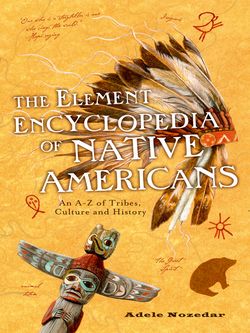Читать книгу The Element Encyclopedia of Native Americans: An A to Z of Tribes, Culture, and History - Adele Nozedar - Страница 14
AGRICULTURE
ОглавлениеWhen the huge animals that formed the primary part of the diet of the early Native Americans eventually died out, they were forced to turn their attention to hunting smaller prey, including birds. Around the same time, Native Americans also began to forage for wild plants, not only as a source of food but also as a source of medicine.
It may come as a surprise that 60 percent of the food we eat today comes from plants that were discovered, and then developed, by early Native Americans. These foods include the potato, the tomato, and, most important of all, maize, or corn.
The first corn came from a wild grass called teosinte that grew in Mexico. The early men and women that lived there managed to modify this grass by selecting those with the fattest heads and cross-fertilizing them with other hardy grasses. By a time a thousand years prior to the birth of Christ, corn was the most important vegetable foodstuff in Mexico. The cultivation of corn then spread into the American southwest and was adopted by three civilizations that became famed for their farming methods. These were the Anasazi, the Mogollan, and the Hohokam.
The earliest of these three peoples were the Mogollan, who dwelled on the borders of what is now New Mexico and Arizona between A.D. 150 and 1450. Their homes—subterranean pits covered by a “roof” of brush and plaster made from mud—would develop into stone dwellings.
Next came the Hohokam, who lived in the scorchingly hot Sonoran desert west of the mountains that bordered the Mogollan areas. They lived between A.D. 200 and 1450. The harshness of their environment forced them to become ingenious, and they discovered that they could make the dusty desert soils and sands blossom by means of irrigation. They built hundreds of miles of canals, up to 25 feet wide, sourcing their water from the Gila and Salt rivers. Their crops included corn, beans, squash, and cotton. Examination of Hohokam remains has revealed rubber balls; this is a mystery, since at the time of the Hohokam, rubber was unavailable in Arizona.
Around A.D. 1450 the Hohokam seem to have simply disappeared. It is possible that a drought or a crop failure caused them to disband and seek other places to live.
In the meantime, the Anasazi people—otherwise known as “The Ancient Ones”—arose to the north of Hohokam territory. They further developed effective systems of irrigation, and farmed maize and cotton, learning along the way to weave the cotton crop into a useful fabric.
